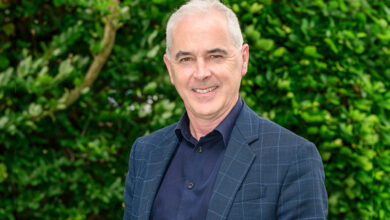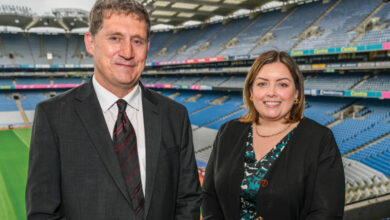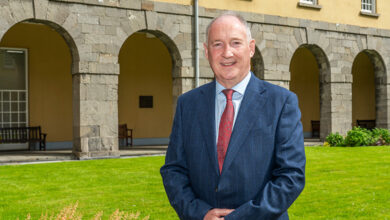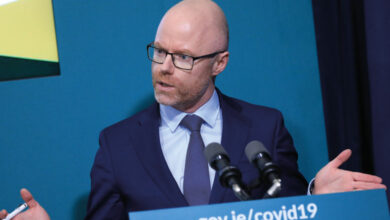St James’s Hospital leads the way on standards-based innovation for digital care
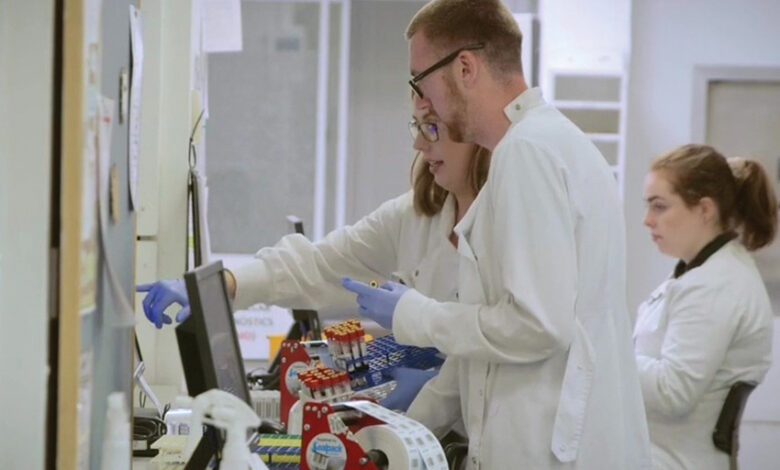
RFID belongs to a group of technologies referred to as automatic identification and data capture (AIDC). The technology has been around and in use since World War II but its development and ever-expanding applications in track and trace made it an ideal technology to introduce to a healthcare environment. The RFID technology utilises tags or smart labels to scan data.
“The adoption of standards is a prerequisite; if you want to achieve the highest levels of digitalisation and automation,” Vincent Callan says, discussing a project within St James’s Hospital that has seen RFID-enabled tracking technology rolled out in the hospital as part of a collaboration with GS1 Ireland and Aerospace Software Developments (ASD).
By implementing RFID in a healthcare environment, real-time data on a wide range of assets becomes available whether it be samples, movement of healthcare staff, patients, or medical devices. The project is the first of its kind in Irish healthcare.
“The utilisation of RFID is a good example of innovation across technology, international standards, and the healthcare system. The GS1 Standards ensure what we do is reliable and can be replicated and that we are adhering to best international practice in our adoption of this scanning technology.”
Una Geary, Director of Quality and Safety Improvement, St James’s Hospital
The RFID technology allows the staff at St James’s Hospital to use their own numbering bank as assigned by GS1 Ireland to identify patients, staff, samples, and other items. Pharmaceuticals and medical devices already have the GS1 unique identifier assigned by the manufacturer for regulatory compliance so this means that everything can be tracked by scanning or RFID and the hospital has full visibility of the patient pathway. Since early 2000, GS1 Ireland has been active in healthcare with the primary objective to enhance patient safety, and to drive supply chain efficiencies.
“Through analysis of the data retrieved from the RFID technology we can build up a real-time holistic view of what is happening within an acute setting,” Callan says. “For example, the time a patient may spend with a health practitioner within the setting. Unique numbers through tagging or smart labelling are assigned to people, places, objects, and events. An event is created by the association and dissociation of two tags that electronically speak to each other.”
The project is being undertaken with the ultimate goal of St James’s Hospital becoming the first hospital to fully adopt GS1 Standards, which “provide a common language that allow organisations to identify, capture, and share information the same way all over the world”, for all areas of care.
This, Siobhain Duggan, Director of Innovation and Healthcare at GS1 Ireland, explains, will improve the patient experience. “It is all about the patient, the patient journey, the patient experience, and the data you can gather from different events,” she says. “With the right standards in place, it is much easier to share data across the system and to utilise this real-time data to inform the medical decisions taken.”
Expanding upon this point, St James’s Director of Quality and Safety Improvement Una Geary states that standards can “bring reliability to the system”. “They ensure that things like laboratory samples are moving through the system to where they are supposed to be,” she says. “There have been positive impacts for patients and healthcare staff who now have at their disposal the data to corroborate that every aspect of the laboratory sample journey is mapped and visible.
“The utilisation of RFID is a good example of innovation across technology, international standards, and the healthcare system. The GS1 Standards ensure what we do is reliable and can be replicated and that we are adhering to best international practice in our adoption of this scanning technology.
“This project started out as an aid to improvement in two specific areas in the hospital, both were related to health and safety: one was making sure that laboratory samples get from one part of the hospital to the laboratory reliably, in a time effective manner with full identification in place. Secondly, and perhaps more importantly of the two areas, was that of patient wellbeing. We have implemented the technology in such a way that we know when a patient is on a ward, and we can identify if there is a risk that they might leave that ward without support and act accordingly.
![]()
“With standards and technology, we have developed a solution to allow the patient to move freely within the safe zone, and if they move outside, the appropriate people receive an alert,” Callan adds. “The other example is the precious sample, there are times when you only get one opportunity to take a sample. The two principles here are patient safety and accurate fast diagnostics.
“By implementing a technology that had not previously been used in a healthcare environment in Ireland, St James’s Hospital has created a platform on which they can build to solve other problems.”
Research analysis on the impact of these innovations in the hospital carried out by Una Geary with colleagues in Trinity College Dublin found positive outcomes in knowledge gathered and shared, collaboration, improving the work processes. RFID-enabled logistics technology was found to have promoted shared understanding of the system and identified areas for improvement.
These findings will contribute to the hospital’s strategic ambition, serving as a foundation to accelerate other strategic information technology projects and demonstrating progress towards being an exemplar healthcare site for the adoption of GS1 Standards.
Both St James’s Hospital and GS1 Ireland speak in glowing terms of the collaboration between the two organisations that has now lasted almost 20 years. Again, Duggan emphasises that this long-term collaboration and the adoption of Global Traceability Standards is designed to facilitate a safer and smoother patient journey.
“Standards provide the foundations and through our long collaboration, starting with the haemophilia track and trace programme and the more recent procurement developments, the foundations were there so it became about supporting further development,” she says. “It is important to have those foundations in place so that you have certainty around what you are identifying, who you are identifying, where that person is, and then that it can be built into the futureproofing of the process. This is all about the patient: the patient journey, the patient experience, and, of course, patient safety.”
![]()
Vincent Callan adds: “Standards are an enabler for digitalisation, track and trace, compliance. The standards give us assurance and visibility on the journey of both patients, staff, and products.
“Along that journey, important relationships are forged because any solution in healthcare can only be solved by thorough understanding and collaboration, we are looking to push ahead with the full rollout and implementation of a digital network.”
The rollout of the technology can also be a balm at a time when staff shortages are such an issue within healthcare, as Una Geary notes, that the rollout of the technology with the electronic monitoring and restocking features are a massive aid to staff for example allowing staff to focus more on direct patient contact.
Siobhain Duggan extrapolates on the next stage of the project: “There are so many opportunities and St James’s have spent time teasing out the practical issues of rolling out the hardware and combining it with the software but now there is a launchpad to go in lots of directions.
“We will put it in place in a way where we can really expand and utilise its full functionality to facilitate clinical decision making across the hospital.”
Concluding, Vincent Callan is clear about what will enable the transformation that both St James’s Hospital and GS1 Ireland foresee happening at the hospital: capital investment for the rebuilding of the physical environment: “There are plans in place to try to draw down capital investment to rebuild St James’s Hospital, however it is what happens inside the building that is important.
“The knowledge acquisition that is developing in St James’s Hospital with our use of GS1 standards and RFID technology in collaboration with ASD puts us in a unique and strong position to be an exemplar for collaboration between a Public Hospital, Industry Partner, (ASD) and Global Standards, (GS1 Ireland). This approach takes time and effort, however, in our experience, it creates the full solutions to a real problems in a hospital environment.
The implementation of the technology will be a vital part of the growth of the overall campus, where 13,000 healthcare staff will be employed as part government policy to create a tri-located campus.
“GS1 Standards give us the flexibility to look at workable solutions to enable us to run the hospital in the safest and most efficient manner possible. These solutions will be of benefit to all our patients and all of our staff.”
E: vcallan@stjames.ie
E: siobhain.duggan@gs1ie.org
W: www.stjames.ie



